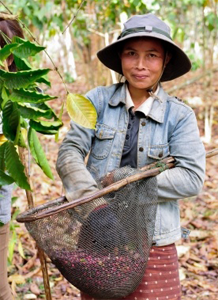The millennium development goals are the eight objectives that were agreed upon by the 189 member countries of the United Nations organisation which is now 193 countries in collaboration with about 23 other organisations that are committed to the cause of helping realise the Millennium Development Goals so as to help the under developed countries to attain some level of development and internal stability. These eight millennium development goals were drafted and signed during the Millennium summit after the United Nations Millennium Declaration in the year 2000. It was a draft which sought to help bring about the eight millennium development goals by the year 2015. The eight vital areas identified and included in the millennium development goals were seen to be areas that needed prioritising if sustainable development was ever to be attained. It was seen as a very pivotal part in the race to help the countries that were deemed to be Highly Indebted Poor Countries (HIPC) use the little resources that they have in concentrating on other developmental projects in such countries rather than using those scanty resources to settle debts that they owe other countries.
The eight (8) Millennium Development Goals include eradication of severe poverty and hunger, universal basic education for all, ensuring gender equality and empowering of women, reduction in the mortality rate of children, maternal health improvement, ensuring that countries are able to deal effectively and efficiently with HIV and other diseases like malaria, helping to create a sustainable environment and the forming of global developmental partnerships to help achieve various goals aimed at helping countries to develop.
Eight (8) Goals For 2015
Eradication of severe poverty and hunger
This involves putting partnering governments of member countries to put in place very sound developmental policies that will ensure that cases of poverty and hunger as a result of inadequate financial and other developmental resources are resolved. Eradicating poverty and hunger will help improve the developmental status of countries and this will in the long run culminate in the attainment of sustainable development. Various areas have been targeted by the UNDP and all the parties are involved in the bid to help eradicate severe poverty and hunger. Some of the targeted areas include; ensuring that the total number of people living on a daily wage of not more than $1.25 is reduced by 50% from the year 1990 to 2015, ensuring that the number of employment avenues for the citizens are increased significantly and also ensuring that the total number of people who go without adequate food is reduced by 50% between the year 1990 and 2015.
Universal basic education for all
This involves the targeting of children at the basic education level as an area that has the capability to bring about sustainable development. When education is made free for young children at the basic education level, almost each child will have some form of educational upbringing which will reduce the illiteracy level drastically. Illiteracy is an area that has hampered the development of so many less developed countries. The target that has been set is for all children to be exposed to the free basic education by the year 2015.
Gender equality and empowering of women
This involves ensuring that discriminating against certain group of people, mostly women, should be discouraged and abhorred at both the basic and secondary school levels and at all educational levels by the year 2005 and 2015 respectively.
Reducing the mortality rate of children
This Millennium Development Goal seeks to ensure that the total number of children below the ages of 1 and 5 who die to due to very preventable causes is reduced about two-thirds from the year 1990 to the year 2015.
Maternal health improvement
This goal also has to do with putting necessary measures in place to help improve the health status of pregnant women. The targets set for this goal are to ensure that from the year 1990 to the year 2015, the maternal mortality rate is reduced by about 75% and also to ensure that there is free access to health facilities by all with regards to reproductive health.
Effectively and efficiently dealing with HIV/AIDS and other related diseases like malaria
This has to do with the agreement that each party will do its part to ensure that by the year 2015 both the spread of HIV/AIDS and malaria will be greatly reduced and countries should be on the path of reversing the trend of such diseases and also to ensure that there will be free access to HIV/AIDS medication by the year 2010.
Ensuring sustainable environment
This has to do with ensuring that countries make policies taking into consideration the need to sustain the environment, reducing the rate of biodiversity loss by the year 2010, reducing by 50%, the total number of people not getting portable and sustainable basic living necessities like water by the year 2015 and also make sure that massive improvements would have been achieved in the lives of over 100 million people dwelling in slums in various countries by the year 2020.
Forming a global partnership to help countries develop
This goal seeks to ensure that necessary measures like helping countries that are landlocked and also the least developed countries are put in place to partnerships in order to help such countries to develop. This also involves helping the Highly Indebted Poor Countries to get some form of help to offset their debts.

